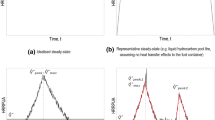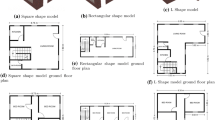Abstract
Building energy simulation is widely used to help design energy efficient building envelopes and HVAC systems, develop and demonstrate compliance of building energy codes, and implement building energy rating programs. However, large discrepancies exist between simulation results from different building energy modeling programs (BEMPs). This leads many users and stakeholders to lack confidence in the results from BEMPs and building simulation methods. This paper compared the building thermal load modeling capabilities and simulation results of three BEMPs: EnergyPlus, DeST and DOE-2.1E. Test cases, based upon the ASHRAE Standard 140 tests, were designed to isolate and evaluate the key influencing factors responsible for the discrepancies in results between EnergyPlus and DeST. This included the load algorithms and some of the default input parameters. It was concluded that there is little difference between the results from EnergyPlus and DeST if the input values are the same or equivalent despite there being many discrepancies between the heat balance algorithms. DOE-2.1E can produce large errors for cases when adjacent zones have very different conditions, or if a zone is conditioned part-time while adjacent zones are unconditioned. This was due to the lack of a strict zonal heat balance routine in DOE-2.1E, and the steady state handling of heat flow through interior walls and partitions. This comparison study did not produce another test suite, but rather a methodology to design tests that can be used to identify and isolate key influencing factors that drive the building thermal loads, and a process with which to carry them out.
Similar content being viewed by others
References
Aittomäki A, Kalema T (1976). TASE—A Computer Program for Energy Analysis of Buildings. Technical Research Centre of Finland (VTT), Laboratory of Heating and Ventilating. (in Finnish)
Andolsun A, Culp CH (2010). A comparison of EnergyPlus to DOE-2.1E: Multiple cases ranging from a sealed box to a residential building. In: Proceedings of SimBuild, New York, USA.
ASHRAE (2007). ANSI/ASHRAE Standard 140-2007, Standard Method of Test for the Evaluation of Building Energy Analysis Computer Programs. Atlanta, USA: American Society of Heating, Refrigerating and Air-Conditioning Engineers.
BLAST (1991). BLAST User Reference, Vols. 1, 2. Urbana, USA: University of Illinois.
Booten C, Kruis N, Christensen C (2012). Identifying and Resolving Issues in EnergyPlus and DOE-2 Window Heat Transfer Calculations, NREL/TP-5500-55787.
Crawley DB, Hand JW, Kurnment M, Griffith BT (2008). Contrasting the capabilities of building energy performance simulation programs. Building and Environment, 43: 661–673.
Crawley DB, Lawrie LK, Winkelmann FC, Buhl WF, Huang YJ, Pedersen CO, Strand RK, Liesen RJ, Fisher DE, Witte MJ, Glazer J (2001). EnergyPlus: Creating a new-generation building energy simulation program. Energy and Buildings, 33: 319–311.
DeST (2006). Simulation Method for Building Thermal Environment-DeST. Beijing: China Architecture and Building Press, 2006. (in Chinese)
DOE-2 (1980). DOE-2 Reference Manual Version 2.1, LBL-7689-M Ver.2.1, LBL-8706 Rev.1.
DOE-2 (1982). DOE-2 Engineers Manual Version 2.1A, LBL-11353.
EnergyGauge (2012). EnergyGauge User Manual 2010. Florida Solar Energy Center, USA.
EnergyPlus (2011). Engineering Reference Version 7.0 Documentation. University of Illinois and Ernest Orlando Lawrence Berkeley National Laboratory, USA.
EnergyPro (2011). EnergyPro User’s Manual, Version 5, July, 2011. EnergySoft, LLC, USA.
eQuest (2009). eQuest Introductory Tutorial, Version 3.63, April, 2009. James J. Hirsch & Associates, USA.
ESRU (1999). ESP-r: A building and plant energy simulation environment, User Guide Version 9 Series. ESRU Publication, University of Strathclyde, USA.
Henninger RH, Witte MJ (2006). Test Report of LBNL DOE-2.1E119 Based on ANSI/ASHRAE Standard 140-2004. Lawrence Berkeley National Laboratory, USA.
Henninger RH, Witte MJ (2011a). EnergyPlus Testing with ASHRAE 1052-RP Toolkit—Building Fabric Analytical Tests. Available: http://apps1.eere.energy.gov/buildings/energyplus/energyplus_testing.cfm. Accessed Nov. 2011.
Henninger RH, Witte MJ (2011b). EnergyPlus Testing with Building Thermal Envelope and Fabric Load Tests from ANSI/ASHRAE Standard 140-2007. Available: http://apps1.eere.energy.gov/buildings/energyplus/energyplus_testing.cfm. Accessed Nov. 2011.
Henninger RH, Witte MJ (2011b). EnergyPlus Testing with Building Thermal Envelope and Fabric Load Tests from ANSI/ASHRAE Standard 140-2007. Available: http://apps1.eere.energy.gov/buildings/energyplus/energyplus_testing.cfm. Accessed Nov. 2011.
Henninger RH, Witte MJ (2011c). EnergyPlus Testing with HVAC Equipment Component Tests. Available: http://apps1.eere.energy.gov/buildings/energyplus/energyplus_testing.cfm. Accessed Nov. 2011.
Huang J, Bourassa N, Buhl F, Erdem E, Hitchcock R (2006). Using EnergyPlus for California title-24 compliance calculations. In: Proceedings of SimBuild, Cambridge, MA, USA.
IEA (1995). Building Energy Simulation Test (BESTEST) and Diagnostic Method. National Renewable Energy Laboratory, USA.
Meldem R, Winkelmann F (1995). Comparison of DOE-2 with Measurements in the Pala Test House, LBL-37979. Lawrence Berkeley National Laboratory, USA.
Sullivan R (1998). Validation Studies of the DOE-2 Building Energy Simulation Program, LBNL-42241. Lawrence Berkeley National Laboratory, USA.
VisualDOE (2004). VisualDOE 4.0 User Manual, March, 2004. Architectural Energy Corporation, USA.
Waddell C, Kaserekar S (2010). Solar gain and cooling load comparison using energy modeling software. In: Proceedings of SimBuild, New York, USA.
Yan D, Xia J, Tang W, Song F, Zhang X, Jiang Y (2008). DeST—An integrated building simulation toolkit, Part I: Fundamentals. Building Simulation, 1: 95–110.
Zhang X, Xia J, Jiang Z, Huang J, Qin R, Zhang Y, Liu Y, Jiang Y (2008). DeST—An integrated building simulation toolkit, Part II: Applications. Building Simulation, 1: 193–209.
Author information
Authors and Affiliations
Corresponding author
Rights and permissions
About this article
Cite this article
Zhu, D., Hong, T., Yan, D. et al. A detailed loads comparison of three building energy modeling programs: EnergyPlus, DeST and DOE-2.1E. Build. Simul. 6, 323–335 (2013). https://doi.org/10.1007/s12273-013-0126-7
Received:
Revised:
Accepted:
Published:
Issue Date:
DOI: https://doi.org/10.1007/s12273-013-0126-7




